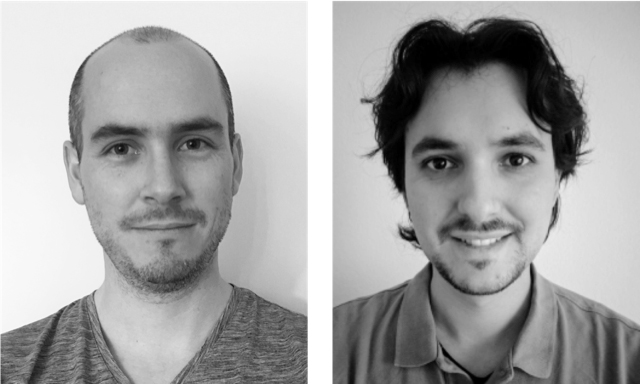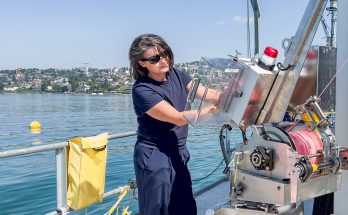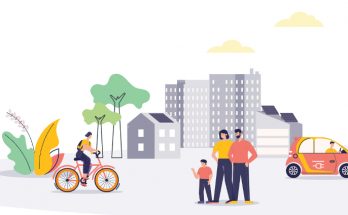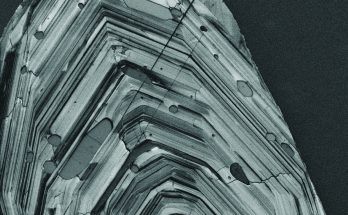Cette publication est également disponible en :
![]() Français
Français
Could palaeoclimatology – the study of past climates based on sedimentary records – provide crucial tools to test our predictive models of climate change? The new SPARK project “More uncertainties for more certainty: using uncertainties to connect fossil pollen records in space and time and better reconstruct past climate dynamics” addresses this challenge.

Manuel Chevalier, who conceived the project, explains his motivations and goals. At Institute of Earth Surface Dynamics (IDYST), Fabio Oriani will be in charge of developing the project.
What is the main objective of your Spark project?
MC: Our goal is to reconstruct past climate variability. To do this, we will develop an unconventional method of analysing fossil pollen. The first analyses of this type date back to the early 1970s. And while the analysis methods have largely evolved since then, the conceptual approach to climate reconstruction has not changed: each record (even each pollen sample!) is considered independently of the others. The so-called “point-based” reconstructions produced are generally associated with the location where the sediments were collected. Yet, fossil pollen samples do not provide a single, accurate record, like a thermometer or rain gauge in your garden. Fossil pollen samples are a record of plant biodiversity and dynamics over a certain time period and region – specifically the entire region from which the pollen grains observed in the sediments may have originated – and cannot be handled independently.
The central objective of our Spark project is therefore to develop a statistical analysis model that takes these spatial characteristics (the “pollen catchment” of each record) into account and uses them appropriately. In this way, we will produce spatialised climate reconstructions from point-based fossil pollen records.
The Spark scheme supports original, high-impact projects. In what way does your project have these qualities?
MC: Integrating spatial and temporal information from pollen records into climate reconstruction is the central innovation of this project. This approach definitely goes against the trend of the last half-century.
Classical analysis methods tend to minimise these spatiotemporal effects. On the contrary, here, we use them and try to extract as much information as possible. In addition to producing a model closer to reality, this approach will allow us to “connect” the reconstructions to each other. When their catchment overlap, we will create the first continuous and spatialised climate reconstructions, and thus, the first gap-free, large-scale reconstructions.
Once the model is developed, the mid-term objective is to create a new generation of more robust palaeoclimate reconstructions around the world. This will help us improve our understanding of past climate dynamics and thus better anticipate the climate changes that await us in the coming decades.
What will be the main challenge and what are your key strengths to face it?
MC: This project is complex for many reasons. The main challenge will probably be to define a model that properly considers the spatial characteristics of the pollen records. We will have to find a good balance between a too high complexity – that would make our method not very generalisable (and possibly too greedy in computation time) – and a too low complexity – that would not enable the conceptual leap from point-based reconstruction to spatialised reconstruction.
Fabio and I will attack the problem with different but complementary skills, which should allow us to find the right formula. Fabio has a good knowledge of spatial modelling methods, which will allow us to develop an advanced statistical approach. On my side, my experience with point-based climate reconstructions and pollen data will allow us to structure the a priori information to inform the models and ensure that the results are consistent from a palaeoenvironmental point of view.

How did the project emerge?
MC: The first time I had this idea – or at least one version of it – was a few years ago. I was looking at a map of all the fossil pollen records in Europe in order to make reconstructions. The most obvious observation was that some areas had a rather high density of points and others were fairly sparse. The implication was that we had to find a way to “create information” where there was none in order to produce homogeneous reconstructions in my study area.
One solution is to collect sediment samples in under-sampled regions, and thus produce these missing data… But when working on a European scale, as is the case for this project, the logistics are costly in time, money and in personnel!
An alternative approach is to maximise the potential of what is already available and work on modelling. The advantage of developing new methodologies is that they can produce results much more quickly and, perhaps more importantly, they can be used in other regions than Europe and have a much broader impact.
How will you make sure that your reconstructions in the regions without data are correct?
MC: We will have several options to check our climate predictions. In particular, the first step of this project will be entirely dedicated to the analysis of modern pollen records. The advantage of such modern samples is that the associated climate is known. As such, we will be able to compare our reconstructions with the true climate. The same logic will apply in the regions without data. By using our spatial model with modern data, we will be able to assess the accuracy of our reconstructions in such regions. This approach will also allow us to test which modelling options can produce the best possible reconstructions. Eventually, these results will give us a degree of confidence in our reconstructions of past climates.
Why is IDYST the right place for your project?
MC: Although the study of pollen fossils and the associated climatic reconstitution is not a research axis developed at IDYST, the heart of this project will actually be very technical. Therefore, it is important that we are in a structure where we can find an adapted support. I naturally approached Prof. Mariéthoz to propose him to host us in the GAIA team. His expertise in the development of stochastic methods to characterise the spatial and temporal variability of natural systems is an asset for the project. Fabio and I have been working at IDYST for several years now and we know how the institute works. No doubt that it is an excellent place to do this project. From a technical point of view, the department also provides us with the computational resources needed to calibrate complex statistical models and implement big data strategies.
Why is this project important to you?
MC: For several reasons. First of all, it is the first time I carry out a project with my own funds and it is a great pride for me to conduct my own research. This project will allow me to develop and test a unique model of spatialised reconstructions under different conditions in order to assess the conditions in which it performs best.
More generally, this project represents for me the first stone of a broader research objective that I want to develop over the next few years. One of my research axes is to reconstruct the history of climate in regions where it is generally missing. In particular, the tropical regions of Africa and South America are largely understudied, despite their importance in regulating the global climate. Robustly describing the palaeoclimate will have a significant impact on our understanding of tropical climate dynamics, and by extension global climate.
Our reconstructions will also be a test of current predictive models, which attempt to estimate climate change in the coming years and decades. We will be able to compare our palaeo-climate simulations with these predictive models on a large scale. Identifying where and when the fossil record and predictive models agree, and where they don’t, will highlight the strengths and weaknesses of these models and, ultimately, allow us to refine our ability to better predict future climate change.


